lost river
-
Type : cabin
Location: Faverges on the edge of the dead water
Owner: Festival des cabanes
File: FAR
Phase: competition in collaboration with Arno Bovar, Fabien Peter, Lina Graven
Date: 2024
The gravel path leading to site No. 6 is surrounded by thick vegetation. At one point, however, the trees thin out, offering walkers a view of the Eau Morte river. Here we are at the site. At the foot of the embankment bordering the path, the panorama is framed by two large trees. A thin stream of water winds its way over a bed of pebbles. But don't be fooled!
The traces are there, the water sometimes rises almost to the path. And every year, we imagine the stream becoming a torrent, cutting off access to this part of the riverbank. This place invites you to stop: observe, play, picnic. It is a quiet and unexpected haven on this route.INSPIRATION
At the bend in the forest path, on the edge of the stagnant water, the heron nestles on the bank. There, motionless, calm, petrified, reminiscent of the fossils of its ancestors, it warms its wings in its hunting posture, which it patiently maintains as the waves ebb and flow. In this long wait, it watches for floods and droughts, watching time pass in the stagnant water. At the edge of the stone bed, the heron despairs. It protects itself under the umbrella of its wings. Those wings that once provided the contrast necessary for fishing now cast the shadow of its dried-up hopes. In the morning mist, a line of curved ridges appears in the groves. There it is, wrapped in its winged envelope, approaching the ground without ever touching it. In the eyes of all, it gives itself a dignified air under the slope of its envelope, maintaining a haughty bearing in the gnarled joints of its skeleton, whose heart shines like the sunshine of a summer day. In this frozen stretch, the interlacing of feathers reveals, beneath a hidden modesty, secret inner feelings. Time stands still for just a moment in this place, to enjoy this tenuous point where the path meets the stream, the self meets the landscape.
With both feet anchored in the sand left behind by the muddy floodwaters that have receded, he invites walkers to follow his example, taking them under his wing. Perched on his stilts, he allows them to observe, listen, and become one with their surroundings.
We discover an invitation to descend between his legs, like young herons, and finally lift our heads between the curves of his soft feathers to look at the river: has the water returned?PARTI PRIS
As the site allocated to us was next to the Eau Morte river, we took inspiration from the heron, a wading bird often seen on the banks of rivers. We were charmed by its immobility and its relationship with water. We were interested in the Savoyard tradition of woodworking to create doves of peace for the exterior shape of our cabin, which recalls both the curves of the spruce dove's wings and the shape of the black heron's wings in its signature umbrella position. It uses its wings to form an umbrella that creates a shaded area. Fish seeking refuge in the shade become easy prey for the deadly wading bird, which only has to dip its beak through the surface of the water. The dead water in our location would no longer provide prey for the heron, which would then remain frozen in its umbrella position. Walkers are therefore invited between its wings to contemplate the landscape and wait for the water to return. They can reach the riverbed by climbing down the ladder hidden between the heron's legs.
CONSTRUCTION PRINCIPLE
Inspired by the body of a heron, the structure is divided into two parts. The primary structure comprises the legs and lower body. The envelope consists of the skeleton and plumage.
Primary structureTwo beams planted obliquely in the ground follow the slope of the embankment in parallel. They are joined by steps, counteracting them while allowing access to the lower level of the embankment. Two horizontal beams, anchored to the ground at the top of the embankment, rest in the middle of the upper ends of the slanted beams. These horizontal beams support a three-fold platform, on which a floor radiates around the access hole to the ladder, connecting the center of the hut to the bottom of the embankment.
Envelope
Made up of a series of radiating frames forming the cladding of the cabin, each frame consists of a base with a horizontal joist, an inclined joist, and an inclined plank.
The joists hold the plank that forms the outer cladding of the cabin, the plumage of the heron's wings, at two points. The frames near the path and the entrance to the hut, tall and slender, lower and lengthen as they radiate towards the stream, creating a difference in inclination and
height between each of the frames. These are connected to each other by small bracing battens, fixed between the sloping joists, thus joining each wing. -
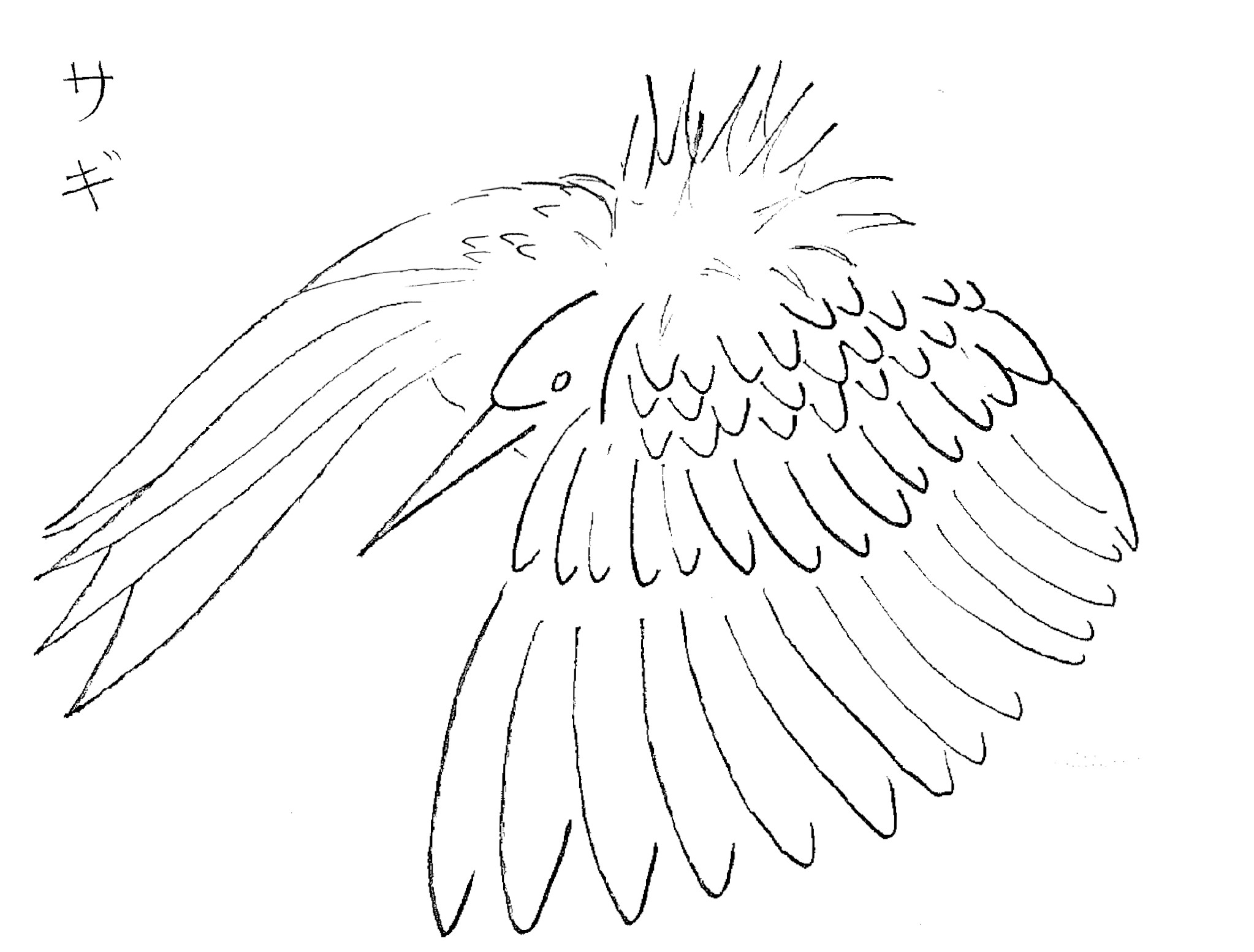
-

-
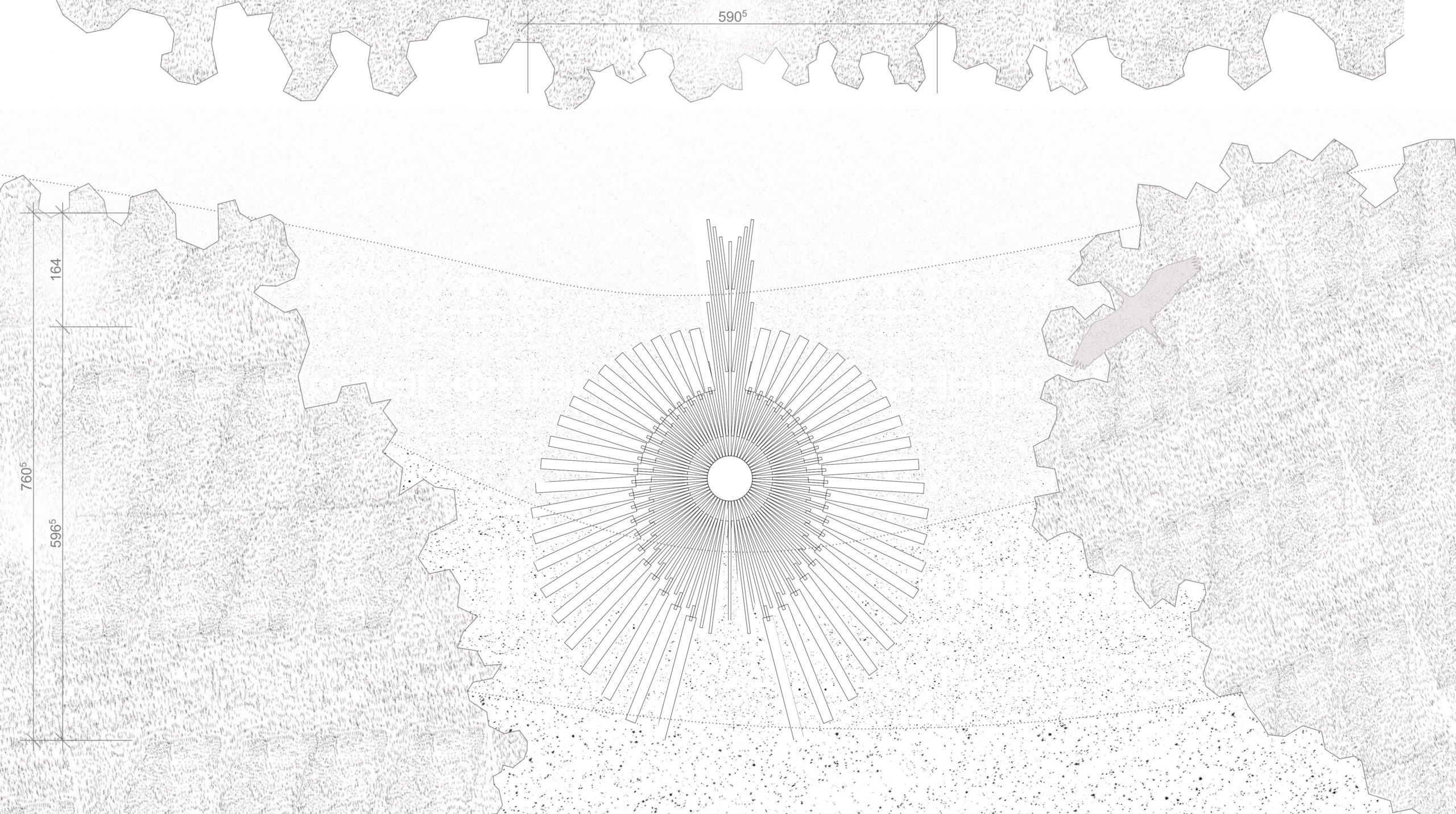
-
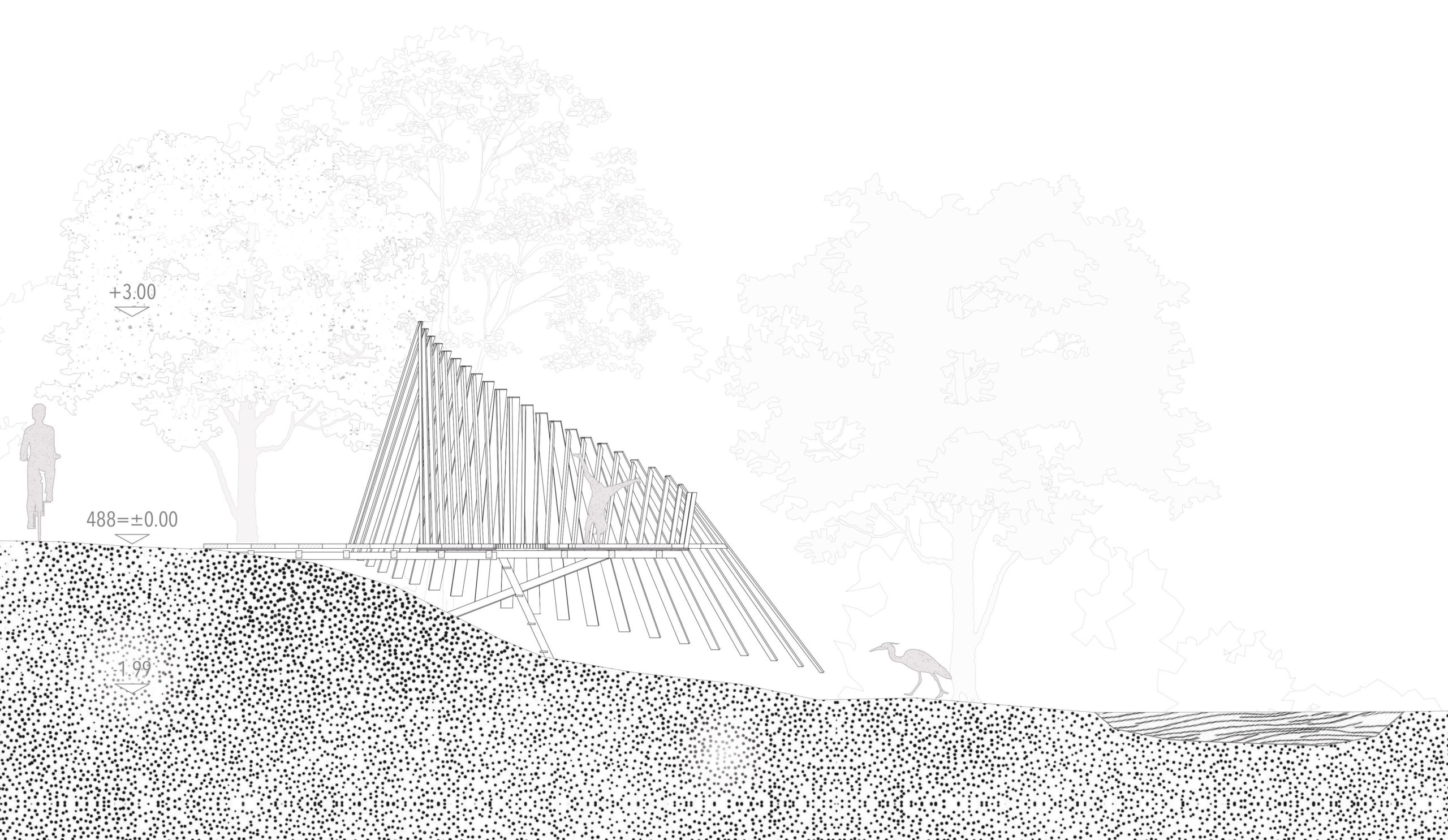
-
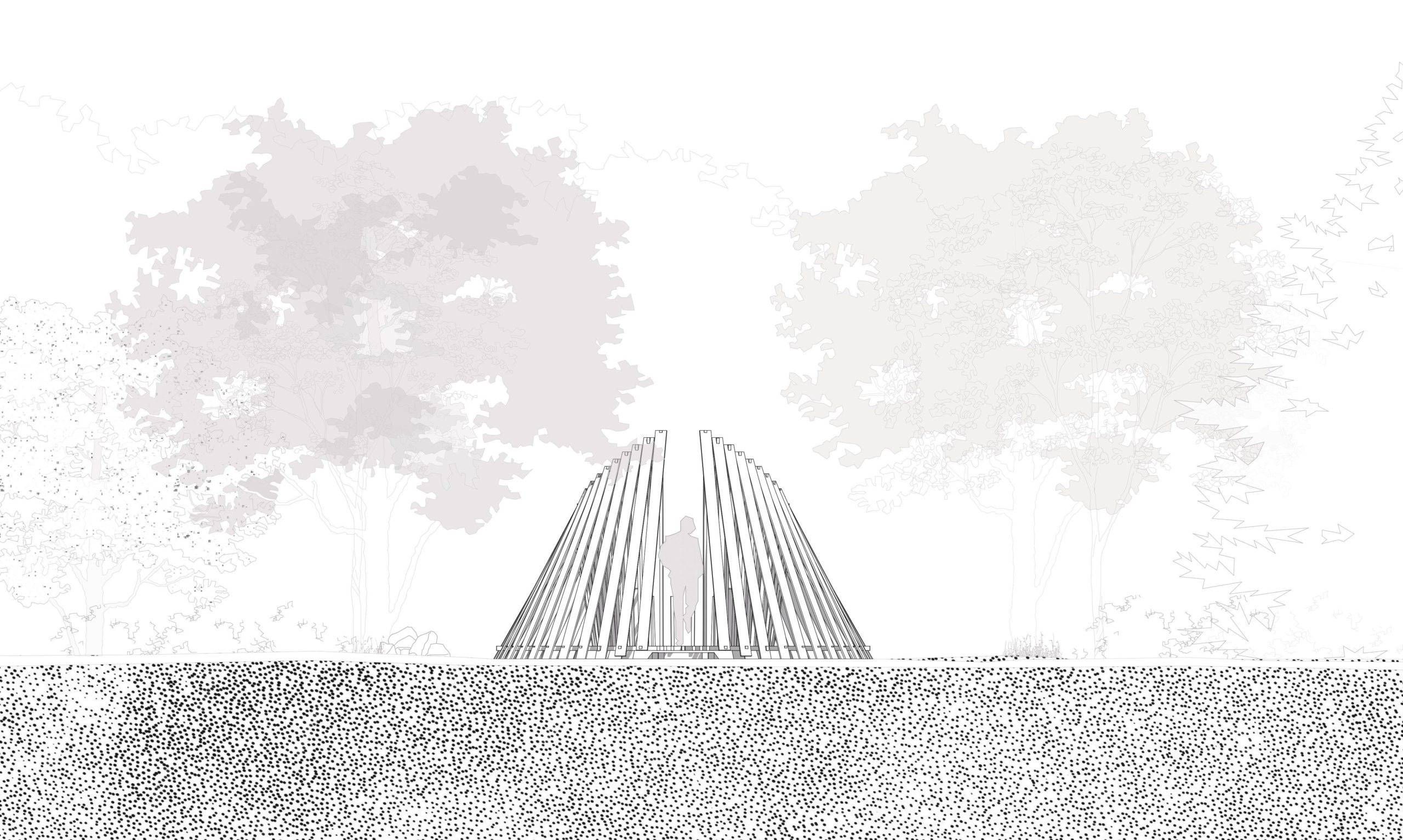
-
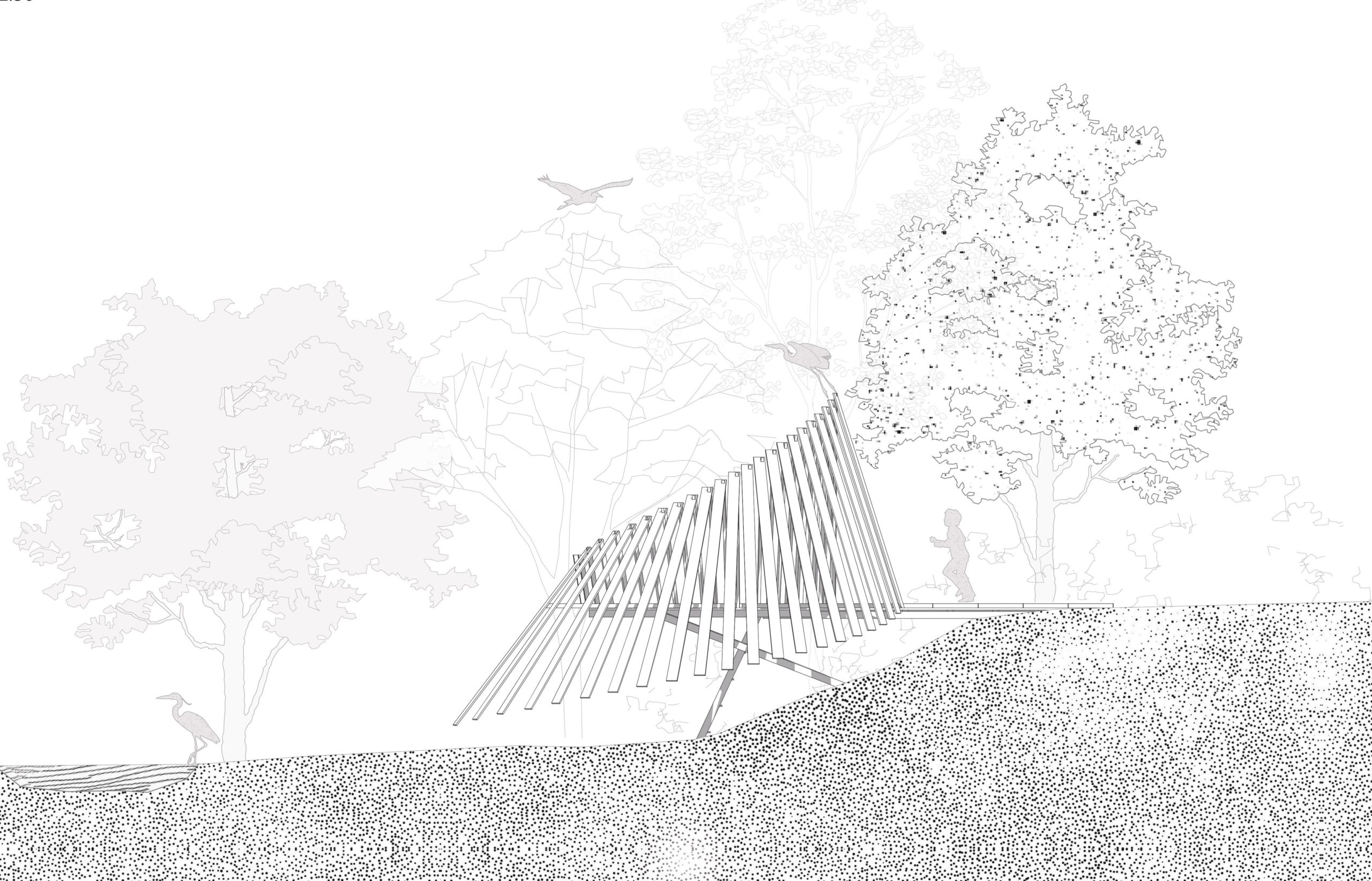
-

-
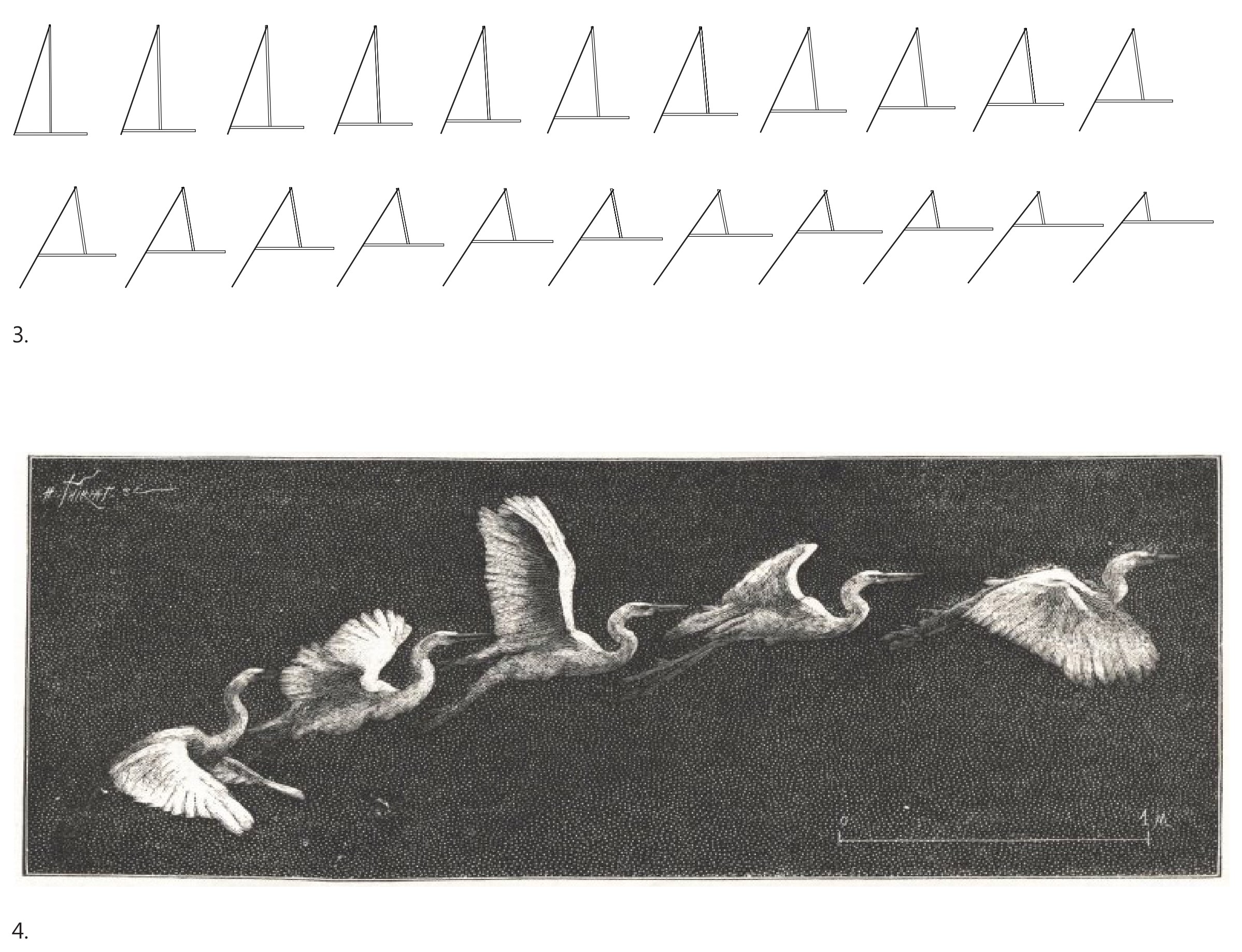
-
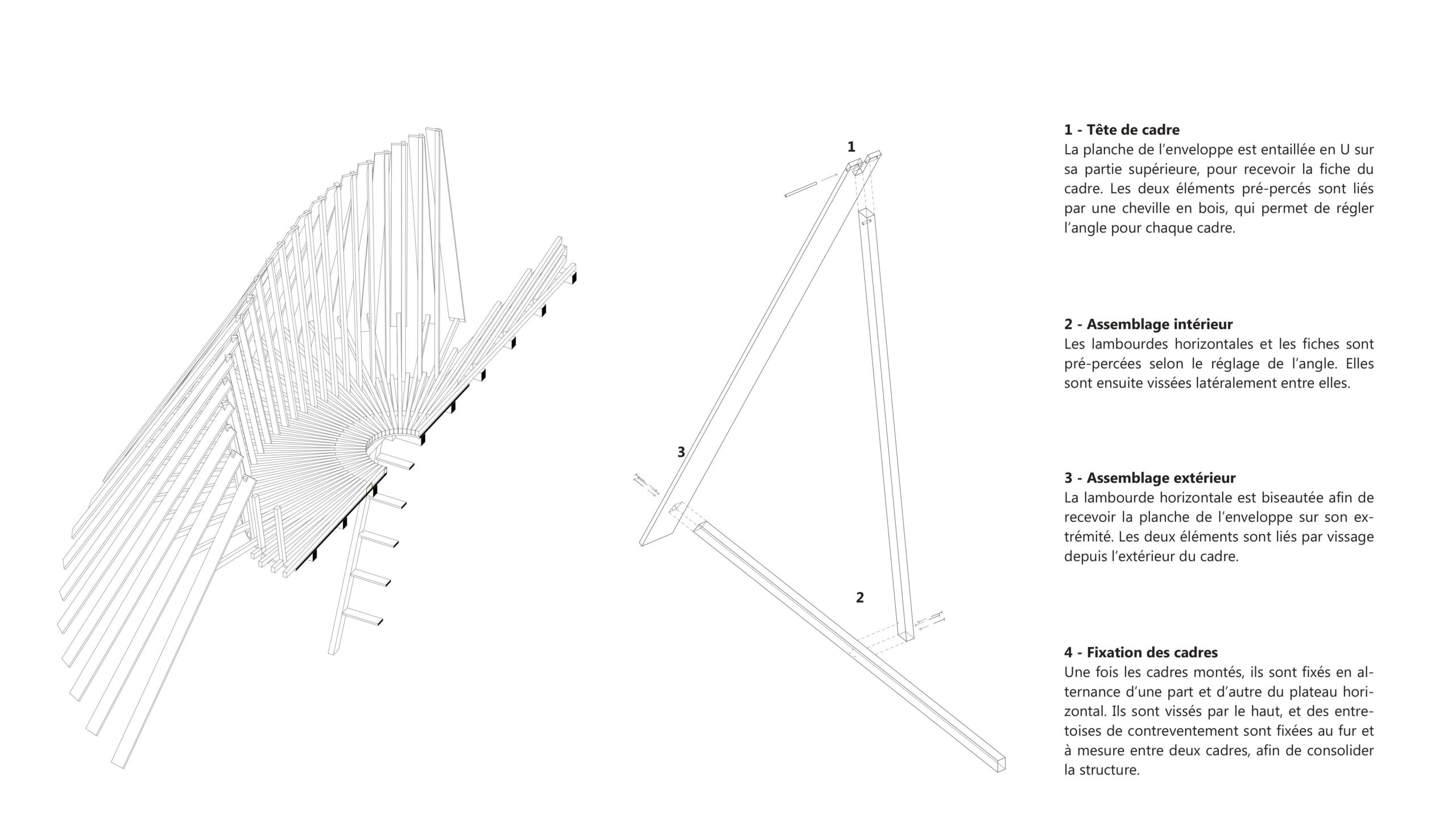
-
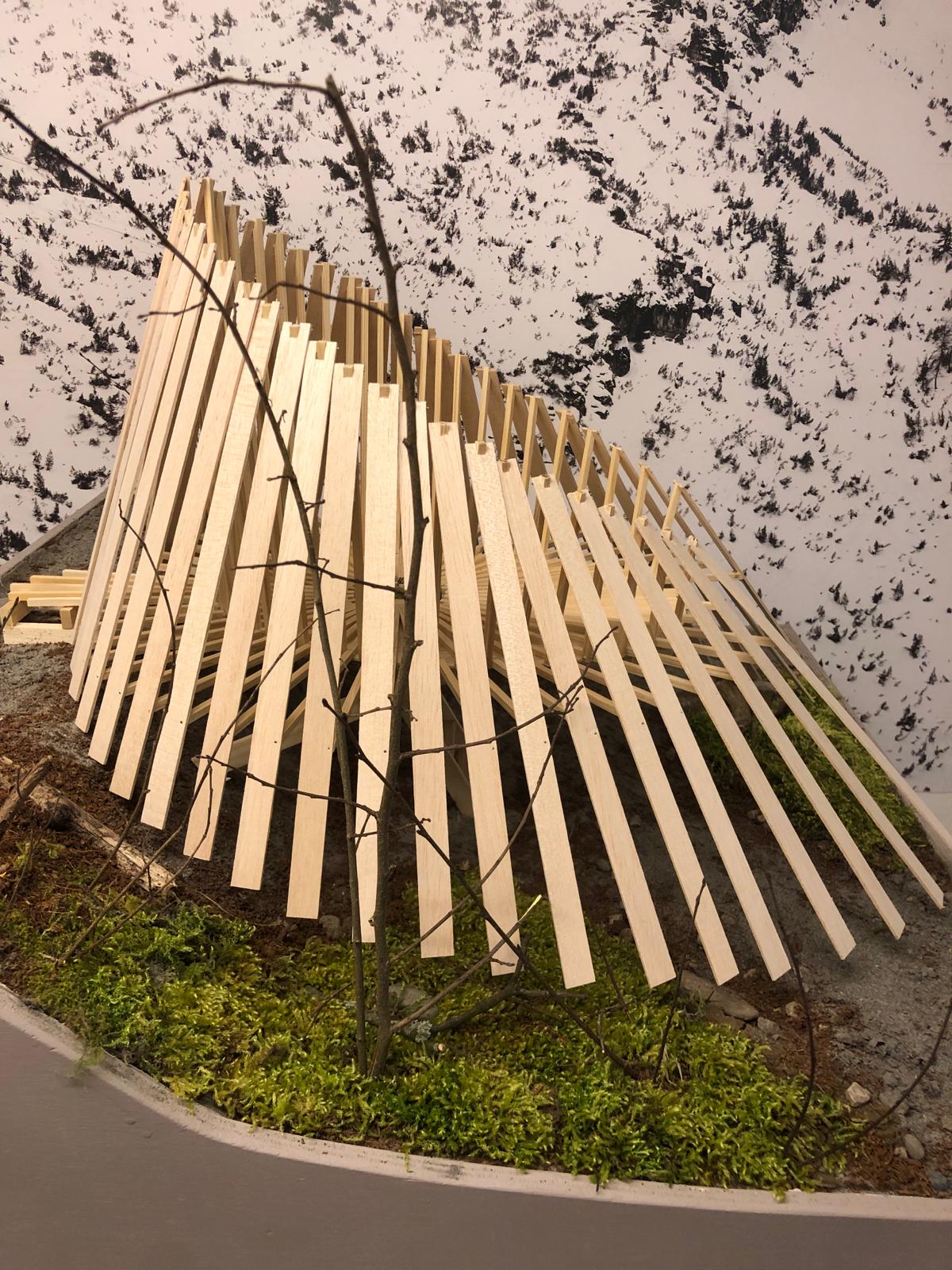
-
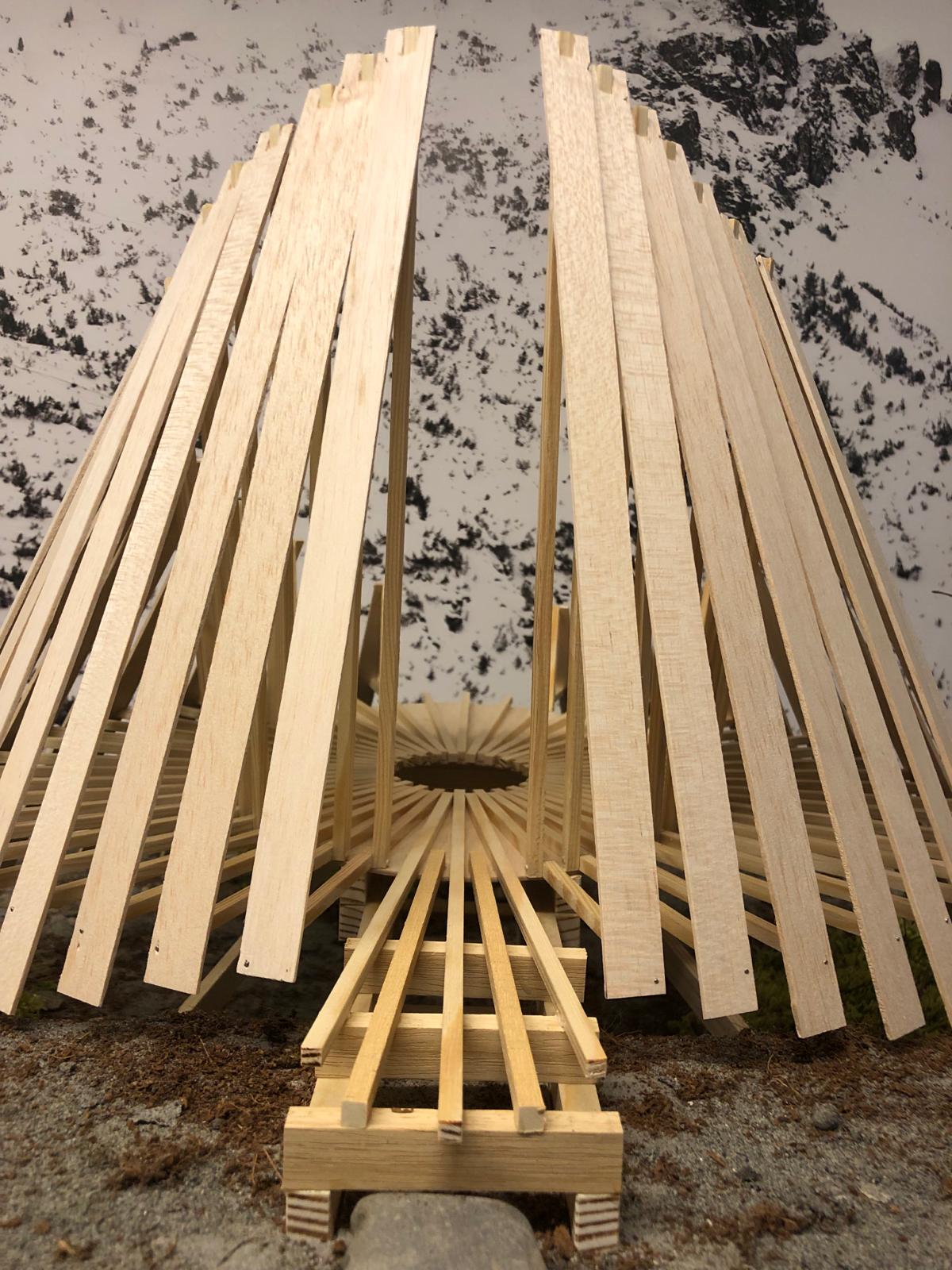
-

- Kagemusha
- Transformers
- Macbeth
- Cast away
- lost river
- the valley below
- Swiss Army Man
- Big Fish
- Powwow Highway
- On connait la chanson
- A River Runs Through It
- Banzaï
- The sound of the music
- captain fantastic
- Pandora
- Ran
- The harvests of the sky
- the machinist
- North by north west
- matriochkas
- The man who would be king
- the lobster
- Un balcon en foret
- Mathilda
- Dog shed
- The horse
- Porte des lilas
- Badlands
- the day after tomorrow
- Playtime
- Les bronzés font du ski
- Spring, summer, fall, winter… and spring
- The return of the king
- from herre to eternity
- The little house in the meadow
- Room with view
- Volver
- When the storks pass by
